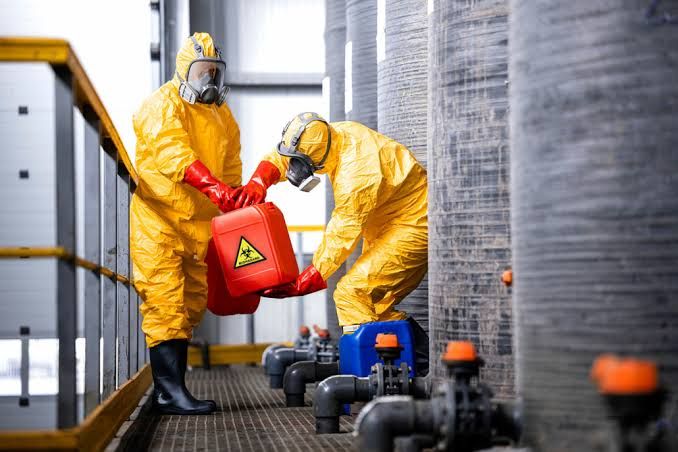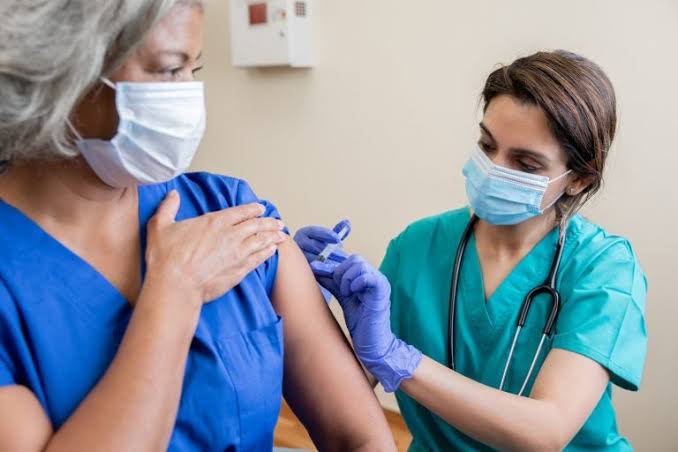
Types of Occupational Hazards that Affect the Respiratory System
Occupational hazards that affect the respiratory system can be categorized into several types, each with distinct characteristics and implications for worker health. Understanding these hazards is crucial for implementing effective safety measures in the workplace. Below are the main types of occupational respiratory hazards:
1. Chemical Hazards
Chemical hazards are substances that can cause harm to the respiratory system when inhaled. These include:
- Dusts: Fine particles generated from processes such as grinding, cutting, or milling. Common examples include silica dust (from construction and mining) and asbestos (from building materials). Prolonged exposure can lead to conditions like pneumoconiosis or lung cancer.
- Fumes: Gaseous byproducts formed during processes like welding or metalworking. For instance, metal fumes from welding can cause metal fume fever, while exposure to lead fumes can result in serious neurological and respiratory issues.
- Gases and Vapors: Volatile organic compounds (VOCs), carbon monoxide, ammonia, and chlorine are examples of gases that can irritate the respiratory tract or cause long-term damage. For example, exposure to high levels of carbon monoxide can lead to hypoxia and even death.
2. Biological Hazards
Biological hazards involve exposure to biological agents that can adversely affect respiratory health. This includes:
- Bacteria and Viruses: Workers in healthcare settings may be exposed to pathogens such as tuberculosis (TB) or influenza, which can spread through airborne droplets.
- Molds and Fungi: Exposure to mold spores in damp environments (such as construction sites or agricultural settings) can lead to allergic reactions or respiratory infections.
- Animal Dander: In veterinary settings or farms, workers may encounter allergens from animal fur or feathers that can trigger asthma or other allergic responses.
3. Physical Hazards
Physical hazards refer to environmental factors that may compromise respiratory health:
- Poor Ventilation: Inadequate airflow in workplaces can lead to a buildup of harmful airborne contaminants, increasing the risk of respiratory diseases.
- Extreme Temperatures: High heat levels may exacerbate existing respiratory conditions by causing dehydration and reducing lung function.
4. Ergonomic Hazards
While primarily associated with musculoskeletal disorders, ergonomic hazards can indirectly affect respiratory health through stress and fatigue:
- Repetitive Strain: Jobs requiring repetitive motions may lead to fatigue, which could impair breathing patterns over time.
- Posture Issues: Poor posture while working at desks or machinery might restrict lung capacity and contribute to breathing difficulties.
5. Psychosocial Hazards
Psychosocial factors such as stress and workplace violence may not directly impact physical health but can influence overall well-being:
- Stressful Work Environments: Chronic stress has been linked to increased susceptibility to respiratory illnesses due to its effects on immune function.
- Workplace Violence: Exposure to violence may lead workers to develop anxiety-related breathing issues such as hyperventilation syndrome.
Conclusion
In summary, occupational hazards affecting the respiratory system encompass a wide range of chemical, biological, physical, ergonomic, and psychosocial factors. Each type poses unique risks that require specific preventive measures tailored to the work environment. Employers must prioritize safety protocols such as proper ventilation systems, personal protective equipment (PPE), regular health screenings, and training programs aimed at minimizing exposure risks for their employees.
Diagnostic Techniques in Occupational Medicine
Occupational medicine is a branch of medicine that focuses on the health and safety of workers. It involves the prevention, diagnosis, and treatment of work-related injuries and illnesses. To effectively manage these health issues, various diagnostic techniques are employed. Below, we will explore several key diagnostic techniques used in occupational medicine.
1. Medical History Assessment
The first step in diagnosing occupational diseases often involves a thorough medical history assessment. This includes gathering information about:
- Work Environment: Understanding the specific workplace conditions, including exposure to hazardous substances (e.g., chemicals, noise).
- Job Duties: Identifying the tasks performed by the worker that may contribute to health issues.
- Previous Health Issues: Reviewing any prior medical conditions or treatments that could influence current health status.
- Family History: Considering genetic predispositions to certain conditions.
This comprehensive approach helps clinicians identify potential links between a patient’s symptoms and their occupational exposures.
2. Physical Examination
A detailed physical examination is crucial for identifying signs of occupational diseases. Clinicians look for:
- Dermatological Conditions: Skin rashes or irritations that may indicate exposure to irritants or allergens.
- Respiratory Symptoms: Signs of respiratory distress or chronic lung conditions related to inhalation of harmful substances.
- Musculoskeletal Issues: Assessing for repetitive strain injuries or other musculoskeletal disorders common in certain occupations.
Physical examinations provide critical insights into how work-related factors may be affecting an individual’s health.
3. Laboratory Tests
Laboratory tests play a vital role in diagnosing occupational illnesses. Common tests include:
- Blood Tests: These can help detect exposure to heavy metals (e.g., lead, mercury) or assess organ function (e.g., liver enzymes).
- Urine Tests: Used to measure levels of toxic substances and metabolites, providing evidence of exposure.
- Pulmonary Function Tests (PFTs): Essential for evaluating lung function, especially in workers exposed to respiratory hazards.
These tests help confirm diagnoses and guide treatment plans based on specific exposures.
4. Imaging Studies
Imaging techniques such as X-rays, CT scans, and MRIs are utilized when structural damage is suspected due to occupational hazards. For example:
- Chest X-rays: Often used to identify pneumoconiosis or other lung diseases caused by inhaled particles.
- MRI Scans: Helpful for assessing soft tissue injuries related to repetitive motion jobs.
Imaging studies provide visual confirmation of physical abnormalities linked to occupational exposures.
5. Environmental Monitoring
In addition to individual assessments, environmental monitoring is essential for understanding workplace hazards. This includes:
- Air Quality Testing: Measuring airborne contaminants such as dust, fumes, and gases.
- Noise Level Assessments: Evaluating sound levels in the workplace to prevent hearing loss.
By monitoring environmental factors, healthcare providers can better understand potential risks and implement preventive measures.
6. Psychological Assessments
Occupational stress can significantly impact mental health; thus, psychological assessments are also important. Techniques include:
- Surveys and Questionnaires: Tools like the Job Stress Survey help evaluate stress levels among workers.
- Counseling Sessions: Providing support for mental health issues stemming from workplace pressures.
Understanding psychological well-being is crucial for comprehensive occupational health management.
Conclusion
In summary, diagnosing work-related illnesses requires a multifaceted approach involving medical history assessments, physical examinations, laboratory tests, imaging studies, environmental monitoring, and psychological evaluations. Each technique contributes valuable information that helps healthcare providers develop effective treatment plans tailored to the unique needs of workers based on their specific occupational exposures.
Investigating Work-Related Respiratory Illness
The investigation of work-related respiratory illnesses is a critical process aimed at identifying the causes and contributing factors to these health issues in the workplace. This process typically involves several key steps, which can be outlined as follows:
1. Initial Reporting and Documentation
The first step in investigating a work-related respiratory illness is the reporting of symptoms by affected employees. Workers should be encouraged to report any respiratory issues, such as coughing, shortness of breath, or wheezing, especially if they believe these symptoms are related to their work environment. Employers must document these reports meticulously, noting the time, nature of symptoms, and any relevant workplace conditions.
2. Gathering Information
Once a report is made, the next step involves gathering comprehensive information about the case. This includes:
- Medical Records: Reviewing medical histories of affected employees to understand pre-existing conditions that may contribute to respiratory issues.
- Workplace Conditions: Assessing environmental factors such as exposure to dust, chemicals, fumes, or other irritants that could exacerbate respiratory problems.
- Job Descriptions: Analyzing job roles and responsibilities to identify specific tasks that may involve exposure to harmful substances.
3. Conducting Interviews
Interviews with affected employees and their coworkers are essential for understanding the context of their symptoms. Questions should focus on:
- The onset and duration of symptoms.
- Specific tasks performed when symptoms worsened.
- Any changes in workplace conditions or practices prior to symptom onset.
4. Environmental Assessment
A thorough environmental assessment is crucial for identifying potential hazards in the workplace. This may involve:
- Air Quality Testing: Measuring levels of airborne contaminants using appropriate sampling methods.
- Ventilation Evaluation: Assessing the effectiveness of ventilation systems in reducing exposure to harmful substances.
- Safety Audits: Reviewing safety protocols and compliance with occupational health regulations.
5. Identifying Root Causes
After collecting data from various sources, investigators must analyze this information to identify root causes of respiratory illnesses. This involves looking beyond immediate factors (like individual behaviors) and considering systemic issues such as:
- Inadequate training on handling hazardous materials.
- Insufficient personal protective equipment (PPE).
- Poorly maintained ventilation systems.
6. Implementing Corrective Actions
Based on findings from the investigation, employers should develop and implement corrective actions aimed at mitigating identified risks. These actions may include:
- Improving ventilation systems or modifying work processes.
- Providing additional training for employees on safety practices.
- Ensuring proper use and availability of PPE.
7. Monitoring and Follow-Up
Finally, it is essential to monitor the effectiveness of implemented changes over time. This can involve regular health screenings for workers exposed to respiratory hazards and ongoing assessments of workplace conditions to ensure compliance with safety standards.
By following this structured approach, employers can effectively investigate work-related respiratory illnesses, leading to improved worker health outcomes and enhanced workplace safety.







